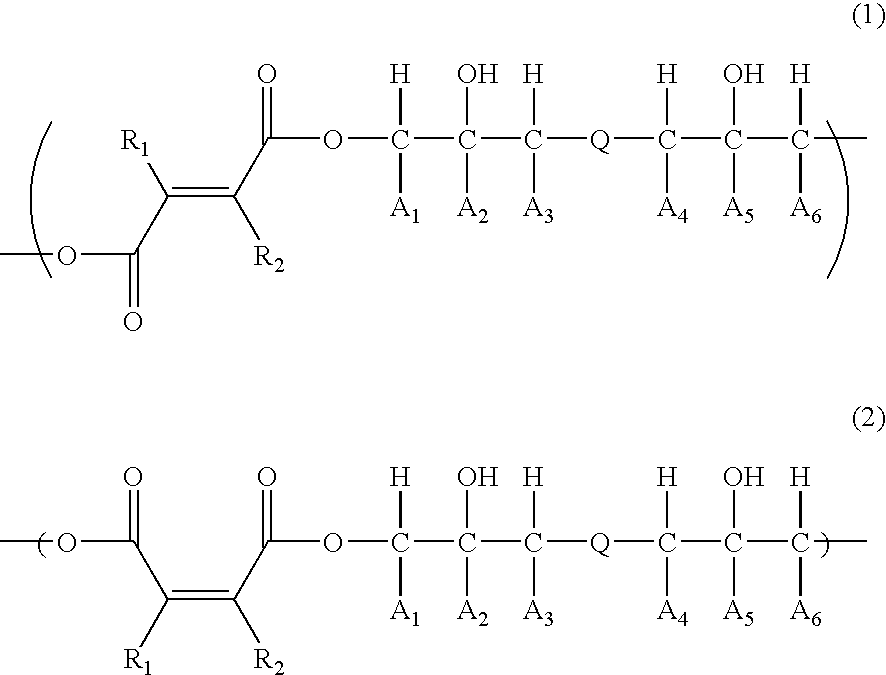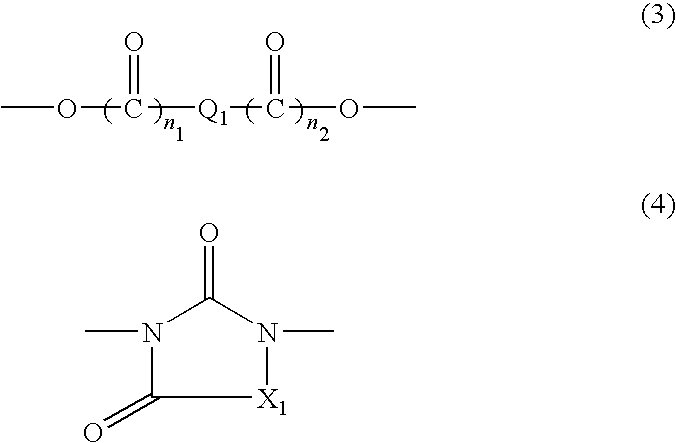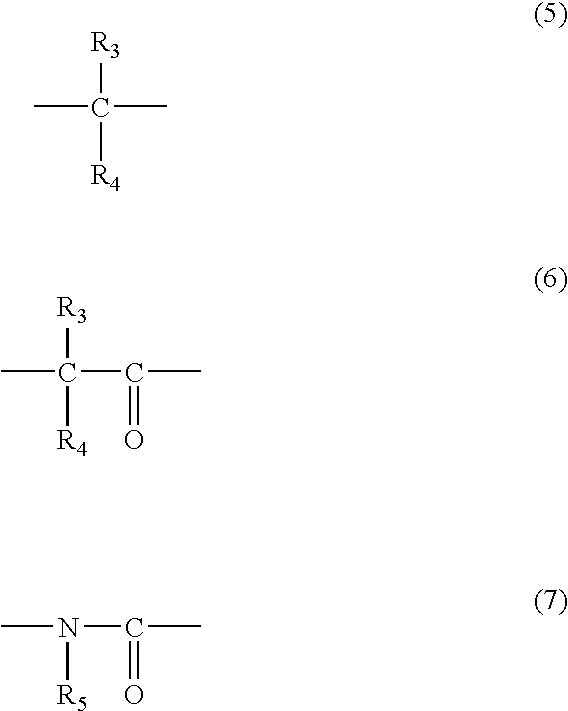Anti-reflective coating forming composition for lithography containing polymer having ethylenedicarbonyl structure
a technology of ethylenedicarbonyl and composition, which is applied in the direction of photosensitive materials, instruments, photomechanical equipment, etc., can solve the problems of pattern collapse, random reflection and standing wave of actinic rays on the substrate, and problems in substrate processing by etching, etc., to achieve effective light reflected, easy to remove, and effective absorb
- Summary
- Abstract
- Description
- Claims
- Application Information
AI Technical Summary
Benefits of technology
Problems solved by technology
Method used
Image
Examples
synthetic example 1
[0122]After 12.00 g of glycidyl 1,2-cyclohexane dicarboxylate, 4.60 g of fumaric acid, and 0.45 g of benzyltriethyl ammonium chloride were dissolved in 68.22 g of propylene glycol monomethyl ether, the mixture was reacted at 130° C. for 24 hours to obtain a solution containing a polymer. GPC analysis showed that weight average molecular weight of the obtained polymer was 5800 (in terms of standard polystyrene). In the meanwhile, it is assumed that the obtained polymer is a polymer having the structure of formula (29) as a repeating structural unit.
synthetic example 2
[0123]After 10.00 g of 1,4-butanediol diglycidyl ether (manufactured by Yokkaichi Chemical Company, Limited), 5.92 g of fumaric acid, and 0.58 g of benzyltriethyl ammonium chloride were dissolved in 66.01 g of propylene glycol monomethyl ether, the mixture was reacted at 130° C. for 24 hours to obtain a solution containing a polymer. GPC analysis showed that weight average molecular weight of the obtained polymer was 4800 (in terms of standard polystyrene). In the meanwhile, it is assumed that the obtained polymer is a polymer having the structure of formula (30) as a repeating structural unit.
synthetic example 3
[0124]After 12.00 g of diglycidyl phthalate (manufactured by Nagase Chemtex Corporation, trade name: Denakol EX721), 4.56 g of fumaric acid, and 0.45 g of benzyltriethyl ammonium chloride were dissolved in 68.01 g of propylene glycol monomethyl ether, the mixture was reacted at 130° C. for 24 hours to obtain a solution containing a polymer. GPC analysis showed that weight average molecular weight of the obtained polymer was 7200 (in terms of standard polystyrene). In the meanwhile, it is assumed that the obtained polymer is a polymer having the structure of formula (22) as a repeating structural unit.
PUM
| Property | Measurement | Unit |
|---|---|---|
| wavelength | aaaaa | aaaaa |
| wavelength | aaaaa | aaaaa |
| wavelength | aaaaa | aaaaa |
Abstract
Description
Claims
Application Information
 Login to View More
Login to View More - R&D
- Intellectual Property
- Life Sciences
- Materials
- Tech Scout
- Unparalleled Data Quality
- Higher Quality Content
- 60% Fewer Hallucinations
Browse by: Latest US Patents, China's latest patents, Technical Efficacy Thesaurus, Application Domain, Technology Topic, Popular Technical Reports.
© 2025 PatSnap. All rights reserved.Legal|Privacy policy|Modern Slavery Act Transparency Statement|Sitemap|About US| Contact US: help@patsnap.com



